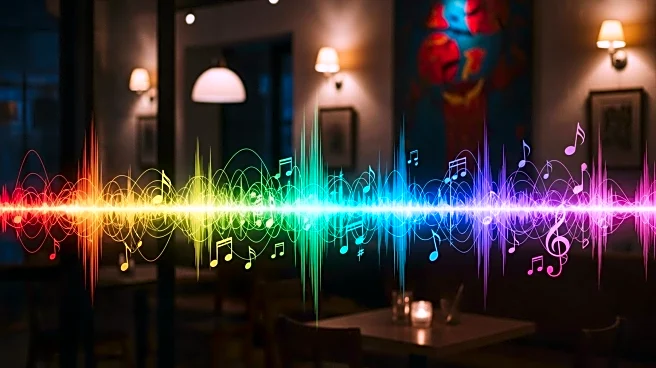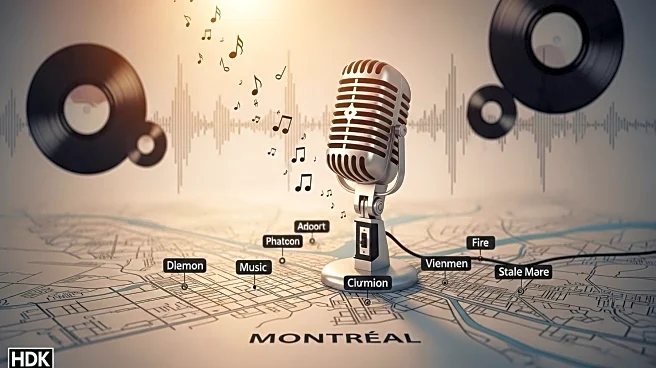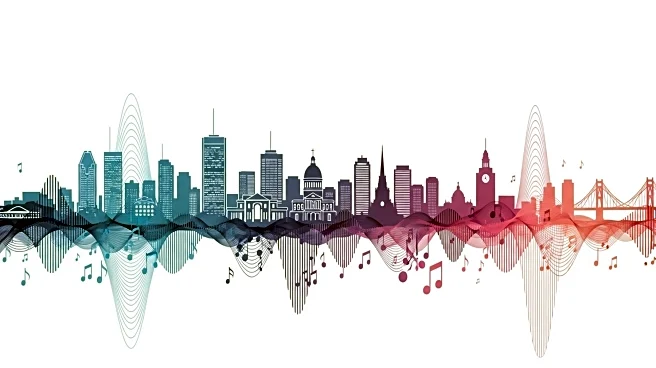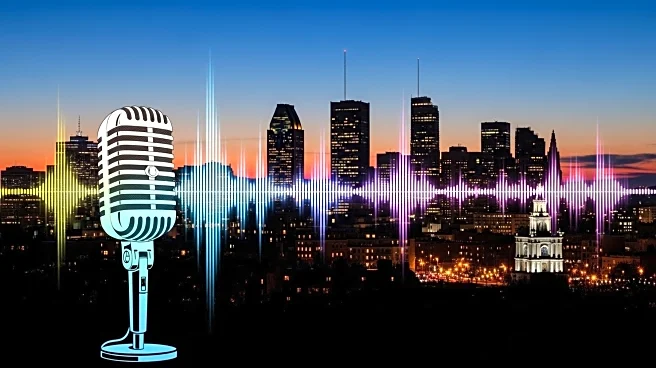What's Happening?
Jasamine White-Gluz, a member of the band No Joy, reminisces about the vibrant music scene in Montreal's Mile End neighborhood during the early 2000s. The area was known for its DIY ethos and served as a hub for emerging artists, supported by local labels like Constellation and Arbutus Records. White-Gluz recalls performing at Casa del Popolo, a small venue that hosted numerous influential acts, including Grimes and Metz. The neighborhood's reputation as an artist enclave dates back to the 1980s, but it gained significant attention in the 2010s when music publications like Pitchfork and Spin highlighted its flourishing subculture. White-Gluz's latest album, Bugland, draws inspiration from her new rural home, yet she fondly remembers the creative energy of Mile End.
Why It's Important?
The Mile End music scene played a crucial role in shaping the careers of many artists and contributed to Montreal's reputation as a cultural hotspot. The DIY approach fostered a sense of community and innovation, allowing musicians to experiment and grow. This environment not only supported local talent but also attracted international attention, influencing the broader music industry. The legacy of Mile End's music scene continues to inspire artists, highlighting the importance of nurturing creative spaces where new ideas can thrive. As cities evolve, preserving such cultural enclaves becomes vital for sustaining artistic diversity and innovation.
What's Next?
While Jasamine White-Gluz has moved away from Mile End, the neighborhood's influence persists in her work and the broader music community. Artists continue to draw inspiration from the DIY ethos and collaborative spirit that characterized Mile End. As urban areas face gentrification and rising costs, the challenge remains to maintain accessible spaces for artists to create and perform. The story of Mile End serves as a reminder of the need to support and protect cultural hubs that foster creativity and community.
Beyond the Headlines
The story of Mile End underscores the cultural and economic impact of artist communities on urban development. As cities grow, balancing development with the preservation of cultural spaces becomes increasingly important. The Mile End experience highlights the potential for artist-driven neighborhoods to contribute to a city's identity and attract tourism, investment, and global recognition. It also raises questions about how cities can support emerging artists in the face of economic pressures.











